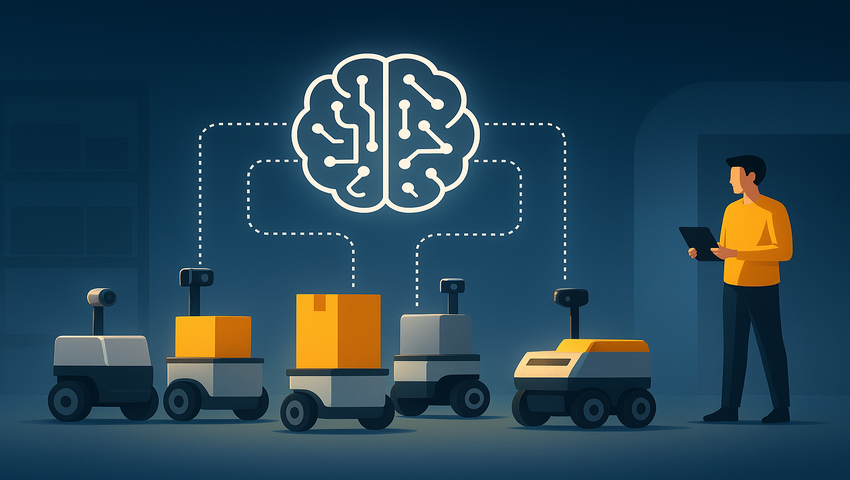
The rise of the collective machine mind
A team of engineers has developed a multi-robot system that enables machines to operate with a “collective brain,” coordinating tasks, navigating complex environments, and avoiding obstacles autonomously. Unlike conventional robots that work in isolation, this system allows robots to function as a cohesive unit, executing complex operations more efficiently and safely.
The concept of a collective brain allows robots to share information about their environment, positions, and assigned tasks. This real-time exchange enables them to adapt to changing conditions or unexpected obstacles, much like social insects such as ants, which achieve remarkable results through collective behavior. In robotics, however, this principle is enhanced by advanced computation, sensors, and communication protocols that allow precise coordination and decision-making.
The MultiRobot FrameWork, built on the ROS2 platform (Robot Operating System), enables seamless communication between multiple robots. Equipped with LiDAR, cameras, and other sensors, each robot can map its surroundings, calculate the optimal route to its destination, and dynamically adjust when encountering new obstacles. LiDAR ensures accurate distance measurements, while cameras and ArUco markers support localization and orientation, reducing positioning errors to just 2.5 centimeters.
The system was tested in a range of simulated environments, including industrial warehouses and cafeterias, using fleets of up to 18 heterogeneous robots. These trials demonstrated how collective intelligence allows robots to complete tasks reliably and cooperatively, even in crowded or dynamic settings.
A key feature of the system is the task controller module. By evaluating each robot’s position and availability, the framework assigns tasks to the most suitable agent. For example, in warehouse delivery, the robot closest to the destination is automatically chosen. This approach improves efficiency, prevents collisions, and balances workload across the entire fleet.
Such capabilities are particularly valuable in environments that require simultaneous operations, such as logistics centers, hospitals, or restaurants, where robots must coordinate to handle multiple assignments without human intervention.
Robots with a collective brain offer clear advantages in efficiency, safety, and adaptability. They can take on repetitive, hazardous, or time-sensitive tasks while continuously adjusting to dynamic conditions. Applications span logistics, healthcare, manufacturing, and service industries – sectors where precision and reliability are critical.
Looking ahead, research in multi-robot systems aims to further enhance collaboration by enabling robots to learn from one another, share experiences, and operate seamlessly alongside humans. The FrameWork MultiRobot demonstrates how collective intelligence can transform industrial automation, representing an important step toward intelligent, self-organizing robotic systems.
